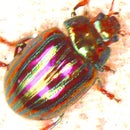Introduction: Puppet Making: Painting a Papier Mache Puppet Head
This shows the steps to get a papier mache puppet head from a blank shape to the finished painted facial features.
This video shows the process speeded up, and the steps explain what was done to paint the puppet
Step 1:
Here is a blank casted papier mache head of a policeman. Papier mache is generally very absorbant. It can be sealed with PVA but applying base coat of emulsion paint is very effective, and gives a good reflective surface for any subsequent coulurs to show up over.
Step 2: Apply a Base Coat
Here the head has had several coats of emulsion. Lightly sand with 300 grit paper between coats. Cracks will often appear for the first coat or two, when the absorbant papier mache soak up the liquid from the paint too quickly. It can take up to 5 coats to get a good stable, even base coat.
Step 3: Apply a Colour Base Coat (optional)
Although a plain white base is a good starting point for applying colour layers. It is not essential to start with white, but it is good being neutral and reflective. Subtle, light transparent colours can be applied over it which will glow show up.
A coloured base coat can be applied instead, in this case the base colour for the puppets skin is a light neutral pink. This is a mix of white emulsion, with yellow oche, burnt sienna and alazarin crimson acrylic paint mixed in.
Step 4: Building Up Richer Skin Tones Over the Base Coat
By applying yellowish tones over the pink, a richer sense of skin tone emerges. This coat is applied and rubbed back gently.The recessed areas, such as wrinkles and edges of the nose, appear more pronounced due to the extra shading.
Step 5: Applying Further Detail
Once the basic skin tones are completed, you can fill in the details. In this case details have been applied with fine liner pens and marker pens. Promarkers are good, having a decent range of art grade colours. Eyes can be drawn on, lips coloured in, and cheekbones highlighted to give a flushed appearance, etc.
Step 6: Final Touches
Final details in place before varnishing
Step 7: Applying Varnish
The final varnish layer seals and protects the paintwork against knocks that might chip it, and moisture, and cehmicals that might caus the paint to be rubbed off or smudged. A satin polyurethane spray applied is best. It is tough, and is not brittle, so can take a hit. Applying many thin coats is the best way to avoid the liquid varnish running or pooling into drips. A spray type avoids visible brush strokes.
Step 8: Finished Puppet
And this is what it looks like completed with costume... Hope it is of use
Follow the Micro Mr Punch project blog
Watch Micro Mr Punch project videos on YouTube
I am the administrator for the Flickr group Puppet Making, which is for any pictures that show puppet-making tips or useful related techniques. Anyone who is into puppet making is welcome to add pictures there if the also use Flickr as well as Instructables.












